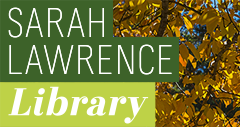Document Type
Article
Publication Date
Spring 2000
Abstract
There are many perspectives on the connections between play and literacy. Writers and speakers concerned with this topic include professional educators in the area of literacy development, early childhood education specialists, and child development experts. My own interest evolved initially from my years as a first and second grade public school teacher. Later, as director of the Sarah Lawrence Early Childhood Center I wrote a book for parents called What You Need To Know When Your Child Is Learning To Read (1999), a book that focuses on variations in timing and domain among children as they seek different entry points into literacy: I wanted to emphasize the fact that parents and other good observers of young children can use the individual differences demonstrated by emergent readers and writers to facilitate literacy development. Most recently, my colleagues at the Sarah Lawrence Child Development Institute and I undertook the co-production of a public television documentary called When A Child Pretends (1999). The filming took place at our Early Childhood Center, and at Central Park East I Elementary School in East Harlem. All of these experiences have led me to consider the framework of this paper. To clarify, I define early childhood as spanning birth to age eight, and my definition of play extends past its pure form as exemplified by imaginative play to include active, child-initiated and adult-facilitated experiences characterized by playfulness and the disposition to investigate. I believe that there are five distinct literacy goals that can be reached by supporting children’s natural inclination towards playful endeavors. To illustrate how these goals may be achieved, I have identified five aspects of early childhood classrooms which value play and playful attitudes and are particularly relevant to fostering children’s literacy.
Recommended Citation
Wilford, Sara, "From Play To Literacy: Implications For The Classroom" (2000). Child Development Institute Research and Resources. 3.
https://digitalcommons.slc.edu/cdi_research/3


